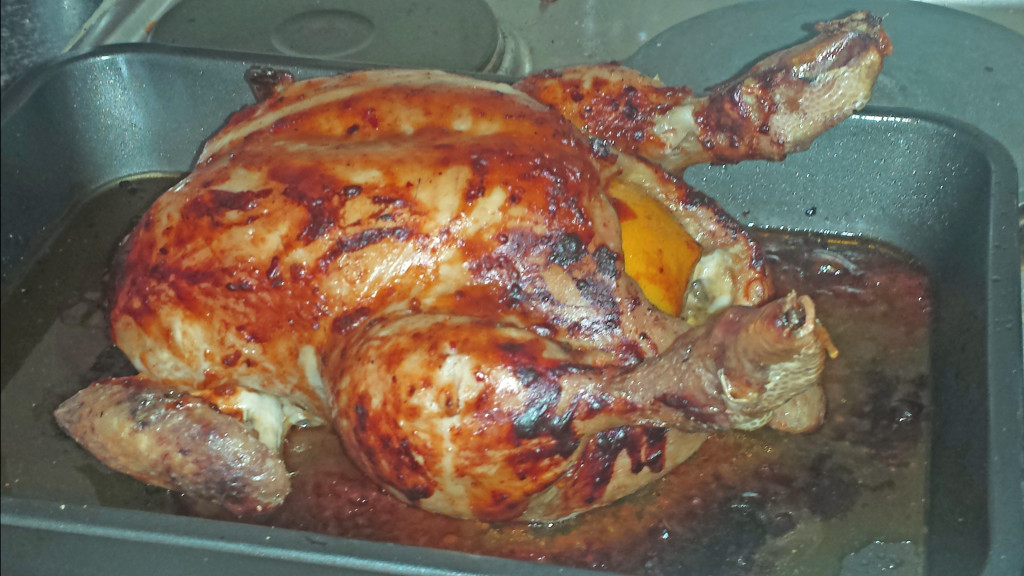My idea of a roast dinner was my mum running around the kitchen sorting everything out, from the carrots, to the spuds and not forgetting the tasty chicken of course! A roast has always been about family time on a weekend, sat around the table and passing dishes across to eachother before eventually getting the chance to indulge.
Although this is traditional (and I love a good tradition!) it doesn’t have to be the reason for roasting a bird. When I changed my diet to consume more natural protein and to make my money go further, I decided to try out roasting for myself and I wasn’t disappointed.
Typically I’d roast the chicken on a Sunday evening and it would last me about 3 lunches. This beat the basic sandwiches that I was used to, that contained a little chicken or ham and didn’t fill me for very long.
Whole chickens cost between £5 and £20, ranging from small, to large, to organic and free-range. My advice is to buy what you can regularly afford. I usually spend between £8 to £10 and for 3 lunches, it’s about £2.60 to £3.33 per lunch, which is usually less than a sandwich anyway!
Here’s how to roast the chicken:
1. Remove the chicken from the fridge 30 minutes before roasting. This brings it back to room-temperature and allows it to cook more evenly.
2. Pre-heat the oven to 200C (fan-assisted 180C) for 5 minutes.
3. Whilst pre-heating, remove the string/trussing from the bird and season the cavity well with salt and pepper.
4. Make a few holes in a lemon using a knife or fork and place inside the cavity of the bird.
5. Season the whole bird on it’s front and back and then rub with oil.
6. Place the bird in a baking dish and cover the tray with foil.
7. Cook the chicken according to the packet instructions. The weight of the bird will decide the cooking time as whole chickens range from around 1.2kg to 2kg. Usually 1hr 30mins is adequate for most medium-sized birds.
8. 15 minutes before the cooking time is up, remove the foil. This allows the skin to crisp and the bird to go brown.
9. Once the cooking time is up, remove the bird and allow to rest for at least 10 minutes.
10. Check it has thoroughly cooked through by piercing the inner side of the thigh with a skewer. If the juices run clear then it is cooked.
Note: Poultry such as chicken can easily carry a great deal of bacteria. It is very important to wash your hands thoroughly after handling the bird and before touching anything else. Also don’t wash the chicken in the sink before cooking as it will only spread the bacteria across the sink.



